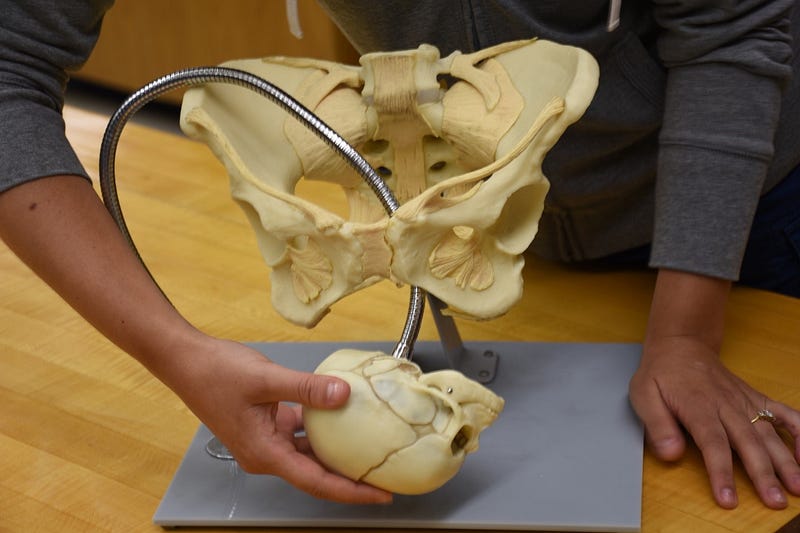# Investigating Ancient Birth: The Evolution of Human Childbirth
Written on
Chapter 1: Understanding the Challenges of Human Birth
Researching the intricacies of childbirth has become a fascinating intersection of technology and anthropology. Natalie Laudicina, a graduate student from Boston University, employs advanced 3-D modeling techniques to study the evolution of birth in various primate species, including New World monkeys, apes, and even extinct relatives like Australopithecus afarensis, famously known as Lucy.
I first encountered Laudicina’s research during a 2015 excavation in southwest France at the La Ferrassie site, historically inhabited by Neanderthals and later by modern humans. As an archaeologist, my focus was on the survival of Homo sapiens in Europe while Neanderthals faced extinction. Our discussions revealed intriguing parallels between our research, particularly regarding how understanding birth mechanics might illuminate evolutionary questions.
In August, I visited Laudicina at her lab at BU, where she has spent the past year analyzing 3-D scans of the pelvic structures of various primates. Her specimens originate from Harvard University's Museum of Comparative Zoology. This year, she plans to extend her research to early hominins and prehistoric humans in Europe.
Laudicina guided me through her innovative process. After scanning and measuring a pelvic specimen, she utilizes 3-D software to create digital cross-sections at 1-centimeter intervals, reconstructing the internal shape of the birth canal. She then generates a digital model of a newborn, based on cranial and shoulder dimensions, allowing her to simulate the birthing process and examine the interaction between the baby and the birth canal. This approach offers fresh insights into how the mechanics of childbirth evolved as Homo sapiens diverged from their primate ancestors.
“The visuals are astonishing,” Laudicina remarked about her software. “It provides a new perspective on a question that has lingered for years.”
Her interest in primate birth evolution ignited during a seminar where she learned about the significant risks associated with childbirth for women. As she delved deeper into the statistics, she became acutely aware of the prevalence of fetal injuries during labor.
Human infants have broader shoulders, which complicates the birthing process. The American College of Obstetricians and Gynecologists notes that shoulder dystocia occurs in nearly 2% of global births, leading to fetal injuries in 25% of those cases. For context, in the United States alone, approximately 19,892 births in 2015 faced such complications. Laudicina aims to leverage her research to reduce these injuries globally.
As we gain deeper insights into primate and early hominin behaviors, the distinctions between us and our closest relatives are becoming increasingly blurred. Traits such as tool use and bipedalism, once thought to be uniquely human, are now recognized in various animal species. However, the mechanics of human childbirth remain distinct.

The structure of the human birth canal varies, transitioning from wide to narrow and back again. Unlike neonatal apes, who can typically birth without rotation or assistance, human infants must undergo two rotations during childbirth, increasing the likelihood of complications and the need for assistance.
Laudicina's research seeks to understand whether the configuration of the human birth canal is linked to our larger brains, broader shoulders, or bipedal locomotion. The completed models will illuminate how these anatomical features may have influenced the evolution of childbirth, providing a nuanced understanding of the selective pressures on the human pelvis over time.
The extensive hours Laudicina dedicates to her research will ultimately allow us to “observe” births that would otherwise be impossible to witness. By studying the childbirth processes of our closest primate relatives and tracing the evolution of the birth canal, she aspires to enhance preventative care for mothers.
“Positioning a mother on her back during labor can constrict and complicate the birth canal, making the process unnecessarily difficult,” Laudicina noted. “I hope this research fosters discussions about optimal birthing positions, enabling better-informed decisions for healthcare providers and families.”
Anna Goldfield, an archaeologist with a Ph.D. from Boston University, specializes in the study of faunal remains at archaeological sites, particularly focusing on Neanderthal and modern human diets. She is currently engaged in a project examining food preservation strategies from arctic and subarctic regions to better understand the behaviors of these ancient peoples in cold climates. Goldfield is also the illustrator of "The Neanderthal Child of Roc de Marsal: A Prehistoric Mystery."
Editor’s note: A portion of Laudicina’s research is supported by the Wenner-Gren Foundation.
Chapter 2: Insights from the Evolution of Human Childbirth
In the video "Cro-Magnon: How the Ice Age Gave Birth to the First Modern Humans," viewers explore how environmental factors influenced early human development. This video provides valuable context to understand the challenges and adaptations our ancestors faced.
The video titled "Homo Erectus - The First Humans" delves into the characteristics of early humans and their evolutionary journey, shedding light on the significant changes leading up to modern human birth processes.